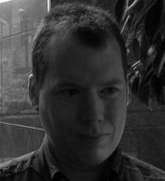“I feel very welcome here,” said Abel Selaocoe just before making his debut with the Seattle Symphony. Not only did he seem completely at home: in remarks introducing Four Spirits, his new work for cello, voice and orchestra, the young cellist-composer invited the audience to enter into his musical world, indicating that he would cue them when to sing along at the appropriate moment. “I’ll see you on the other side,” he winked, just before taking up his position to launch the piece.
Co-commissioned by the Seattle Symphony and receiving its US premiere under guest conductor Lawrence Renes, Four Spirits is an expansive creation for solo cello and orchestra, lasting a little over a half-hour, that takes the concerto format to thrillingly unprecedented places. For one thing, the solo part isn’t confined to playing the cello. Selaocoe’s versatile musicianship embraces singing and movement, composition and improvisation. As the soloist, he embodies a larger-than-life presence, of which the cello is only one manifestation.
Four Spirits draws on Selaocoe’s experiences and memories of growing up in the township of Sebokeng (southwest of Johannesburg) in his native South Africa. Each of the work’s four movements has a distinctive atmosphere while at the same time blending seamlessly into the whole. The first pays homage to the connections Selaocoe feels with his ancestors through the wisdom transmitted by traditional healers. His vividly expressive vocalizing incorporated techniques from South African overtone singing (known as umngqokolo). Against hypnotic cello improvisations, he dredged up richly resonant guttural incantations but also soared with tender melodies.
An animated depiction of the freedom of childhood was followed by a serene section meditating on the power of faith (not necessarily religious) to achieve peace of mind, before culminating in an extended, joyous paean to community and solidarity — a far cry indeed from the individualistic struggle associated with the Western concerto tradition. This is where Selaocoe coaxed the audience, by now enraptured by his charismatic performance, to join him in singing gently shaped chants that seemed like a benediction, a song of thanksgiving at the end of a journey or an evening prayer to crown a fulfilling day.
That was but one of the multiple conversations that unfold within the framework of Four Spirits. Selaocoe’s score calls for an “African percussionist,” and in that role guest artist John Hadfield, positioned at the center of the stage, was a linchpin, engaging in playful duos with Selaocoe’s various personae — cellist, vocalist, body percussionist, even ritual celebrant. In one especially memorable moment, a pair of whirly tubes whistled mystically as Selaocoe sang and plucked. (Translations of the texts, a mixture of Southern Sotho and Zulu, were unfortunately not provided.)
As an encore, he gave an intensely personal account of the Sarabande from Bach’s C major Suite that segued into improvised singing and then a touching interplay with the SSO strings.
Lawrence Renes, returning to the orchestra for the first time in some 15 years, had nothing to do for considerable stretches as Selaocoe explored cadenza-like spaces. But he was fully in the limelight for the program’s second half, presiding over an interpretation of the Symphonie fantastique that generated excitement through a painterly command of sonic color and carefully structured pacing.
Renes emphasized the emotional instability of Berlioz’s artist-hero, his unpredictable mood shifts viscerally illuminated in the opening reveries movement and surreally affecting the flow of the waltz. Aside from some longueurs that bedeviled the pastoral third movement, Renes inspired high-level playing from the SSO — with particularly effective work from the percussion and winds — and conveyed the terrors of the Witches' Sabbath finale with an intensity that made it seem still shockingly innovative.




